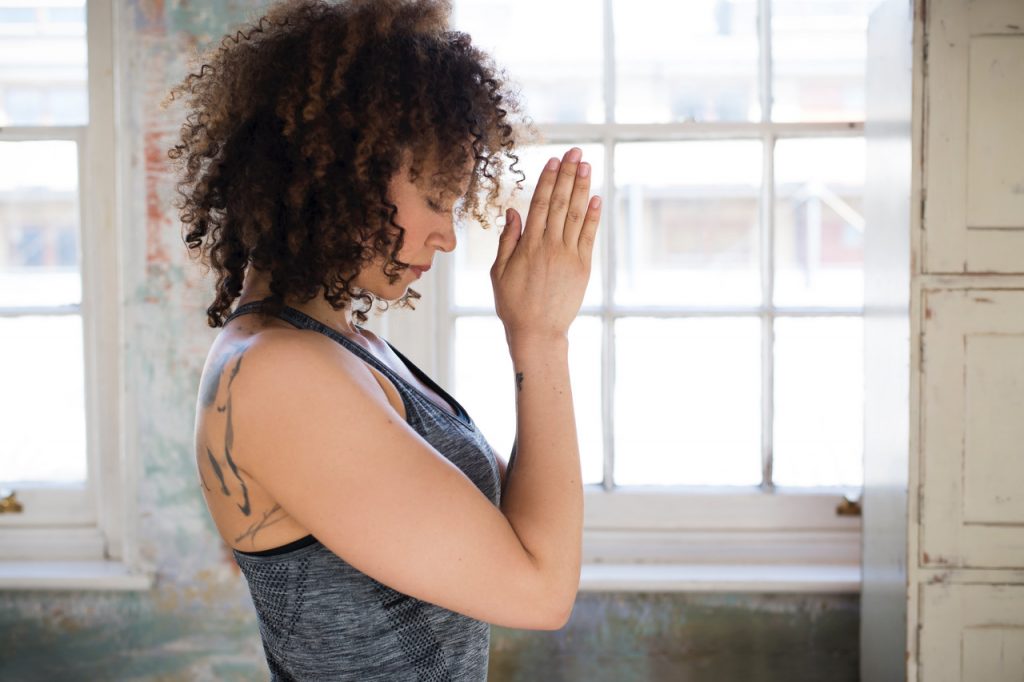Mysore Self Practice? Unsure about what it is and it’s unique benefits? How does someone advance in a practice that you do alone? Ashtanga teacher Corrie Ananda Preece introduces us to Mysore Self Practice and explains the Vinyasa breath count.

Yoga Matters photographed by Karen Yeomans.
Mysore Self Practice
Mysore self practice is learnt and memorised posture by posture over a long period of time. A complete beginner to yoga may begin by learning and practising Surya Namaskar for their first week. A more experienced beginner on the other hand, may begin with Surya Namaskar and also learn the first 6 poses. Postures are added gradually, whatever the starting point by taking the student’s breath control, physical stability and level of concentration into consideration. As the practitioner advances the addition of new postures slows down, giving the body time to change in the direction that will benefit it the most. Most bodies are either overly flexible with excess mobility or overly strong with less mobility. The practice is designed to bring these elements into an even expression.
A Healing Practice
Ashtanga Vinyasa has the reputation of being a highly dynamic form of yoga. It is, however, the individual’s own pace and approach that dictates how dynamic or calming the Ashtanga practice will be. Mysore style ashtanga yoga is an incredibly healing practice when it is learnt slowly and mindfully. Approaching the practice in a mindful way results in the transformation for which this style of yoga has become known.
Though we repeat the same daily physical postures (more or less) the experience of the practice is never the same. The body is different every day and therefore the postures also feel different. The sequence serves as the container through which we get to witness our biopsychosocial responses and learn from them. It is an insightful journey that grows deeper over time, it can be many things but, it is never boring.
Vinyasa Count
The breath, movement and dristi combine to create the most unique aspect to Ashtanga yoga which is known as tristanam. These three work together as one and the purpose of the led class is to remind us of this. Each movement happens on an inhale or exhale and there are a specified number of breaths, which bring us in and out of each posture. This is called the vinyasa count. When we arrive at the posture we stay in the state of the posture for five breaths (one inhale and exhale equals one breath).
The vinyasa count not only teaches us breath control (pranayama), but counting the breath also serves as a mantra to still the mind. Each movement has specific gaze points known in Sanskrit as dristi. The senses follow the eyes and by fixing the gaze we begin to harness the senses and create an introspective practice. The potentially outward focus of the asana practice turns into an internal meditative practice through the observance of tristanam.
Led Classes and Personal Practice
In Mysore, the led class taught by Sharath Jois is held weekly to bring focus to the vinyasa count. In this class we move and breath together to the sound of the Sanskrit count. During the rest of the week each individual practices their postures either in a group class or at home using the pace of their own breath to punctuate their practice. Ashtanga Yoga is a rich practice, with great rewards if you are willing to put the time in.
About Corrie Ananda:

Corrie has practiced Ashtanga Yoga since 2000, is a KPJAYI authorised level 2 Ashtanga Yoga teacher and holds a masters degree in the Traditions of Yoga and Meditation from SOAS, London. Corrie is inspired by being a student because it enables her to share her practice. She enjoys exploring the connections between the physical, psychological and emotional body.





Leave a Reply